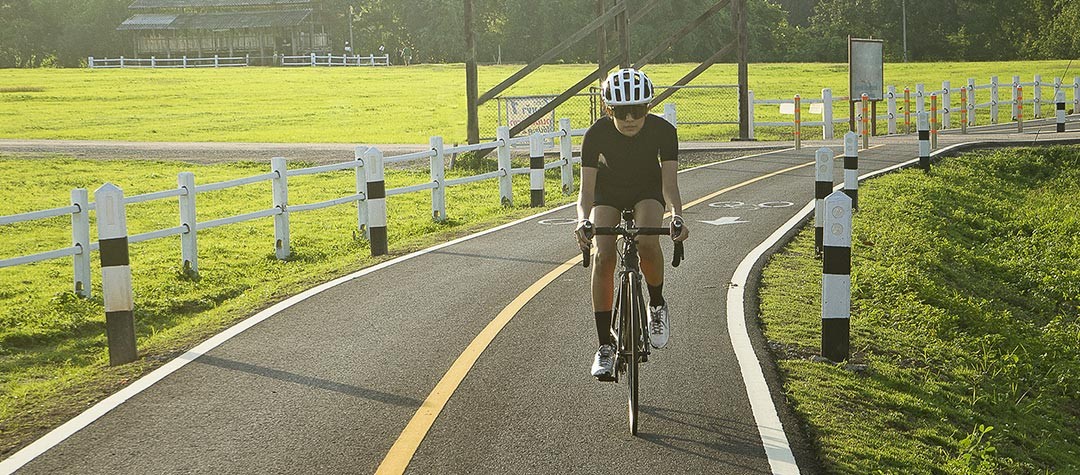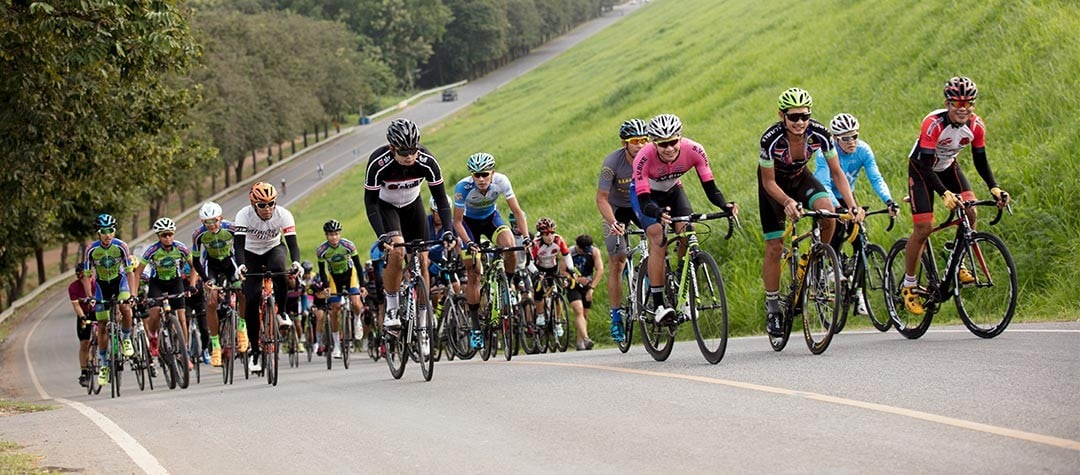Find out about all the essential cycle gear, from bidons to bibshorts and more, to see you through your training and events.
So, you’ve chosen the bike of your dreams (well, what you can reasonably afford) but no matter how dedicated you are, you won’t get the best out of yourself or your new steed unless you’ve got the right kit and accessories. Let’s have a look of some of the basic essentials you’ll need to get started. This is the kit that will see you through training, sportive riding and road racing.
First up, safety…
Helmets
I’ve put this at the top of the list as it’s simply a matter of looking after yourself. The choice of course is ultimately yours but I’ve been wearing one in training and racing for the last 21 years and wouldn’t leave home without it. Almost 80 per cent of cycle related deaths result from head injuries so our advice at realbuzz.com is to invest in one.
Almost 80 per cent of cycle related deaths result from head injuries .
Prices for a decent helmet vary widely but there will be one to suit most pockets. I’d advise buying one with good vents to keep you cool. Helmet technology has moved on vastly in the last decade so they’re not cumbersome at all. Just ensure you get the correct fit so it doesn’t wobble around. Almost all models come with a retention system for a nice solid fit. And remember, if you want to race, you can’t do so without one!
Bidons
Bidon is the French word for ‘cycling bottle’ and is a word you’ll more commonly hear whilst watching races on TV. In short you can’t do without them, as you’ll soon become dehydrated if you don’t take liquid on a ride. Most bidons come in 500 or 750 ml sizes which means on a longer ride you’ll be stopping less to re-fill. Simply put they are a must.
Bib Shorts
Getting a pair of cycling shorts that fit properly is yet another vital part of your kit. Trying to ride any meaningful distance with anything else in between your rear and the saddle will spell trouble. And by that I mean chafing on a grand scale.
Go for a bib type short as these will ensure that the seat of the shorts stays where it needs to be and won’t move around. A nice snug fit is what you should aim for and there are specific ergonomic cuts for men and women. And remember no pants! You’ll just defeat the object.
Arm and leg warmers
These handy little accessories are remarkably simple; yes, they cover your arms and legs (thanks Matt, I hear you say)! But they really come into their own on rides that vary in temperature as they can be easily removed or put on to suit. They’re also great for warm ups before an event as they can be whipped off in seconds. Plus they give you that added dimension of adaptability and weigh next to nothing.
Road Jersey
The road jersey is the staple of any cyclist’s wardrobe with a quite dazzling array of choice now available. The best advice is to go for a well-fitted jersey that is snug but not too tight. A full-length zip is a good idea if riding in warm conditions as this will give you the option of increased ventilation. Most will have two or three pockets in the rear for spares/capes/wallets/phones etc. If you’re buying for the first time, head to your local bike shop to get a better idea of what’s available and the sizing.
Cycling Shoes
The place where your feet join to the bike is one of the three ‘contact points’, the others being your hands and bottom, and arguably this is the most important as this is where power is delivered. Wearing trainers with toe clips and straps is fine for beginners, but if you are even reasonably serious about riding and improving you need to get some stiff soled cycling shoes. The stiff sole will help ensure that as much power as possible is delivered through the pedal stroke and not absorbed by bending and flexing your trainer through each revolution.
If you are even reasonably serious about riding and improving you need to get some stiff soled cycling shoes.
The range available is incredible with cheaper shoes tending to have a stiff plastic/resin sole whilst more expensive ‘pro’ type shoes will have an even lighter and stiffer carbon sole. Look for a shoe with a decent retention system, which can be adjusted for comfort on the move.
Overshoes
These are a must if you are riding in all weathers, especially the winter months. They cover your cycling shoes and fasten with a zip and ideally should be very close fitting. Overshoes come in a variety of thicknesses and will keep your feet warm and dry in the harshest of conditions. No one likes cold feet, plus the fact your shoes will stay clean too!
Gloves/Track mitts
The last point of contact on the bike is of course your hands and they need to be looked after like anything else. In freezing weather if your hands become numb with cold you'll be unable to change gear, or worse still you won't be able to brake, so having some thermal winter gloves is essential, both from a comfort and safety perspective.
In the warmer weather track mitts or fingerless gloves just add a bit of padding and comfort plus, should you be unfortunate enough to crash, they'll protect the palms of your hands as they are often the first part of your body that hit the floor. Try riding with no skin on your hands. I can tell you it’s not much fun! Think of them as a very worthy investment. You'll see most pros wearing track mitts during racing for this exact reason.
Rain Cape/Jacket
The humble rain cape should be yet another indispensable part of your road wardrobe. They are easily stowed in your back pocket and will protect you from rain, wind and cold should you need it. In fact I never ride without carrying one (or a gilet). It doesn't have to rain for you to get a benefit. A drop in temperature or to shield you from the biting cold of a long descent is when it'll come into its own. Go for a brightly-coloured one too for enhanced visibility on the road.
Glasses
Again, I never ride without them. One reason is that I wear contact lenses so glasses keep them from drying out. More importantly they also provide valuable protection for your eyes from road debris, dust, insects, wind and rain etc. Choose a pair with interchangeable lenses (it saves buying two pairs) with a clear lens for low light and tinted/reflective for sunshine. They will assist you in cultivating a cool image but they'll also help relax your neck and upper back muscles because you won't be squinting!













